Activity Stream
Posts Activity Stream
-
-
Couple of posts back mention 300' per minute climb with 2 guys in the Sube. powered plane. My flying partner and I were practiceing landings again yesterday with our 582 powered Avid MK IV. Between the two of us, that's probably 420 lbs, (I'm the light one) and I had about 15 gallons of fuel at least. It was about 35 F and we were on skis. We were getting about 700' per minute climb. Empty weight on the plane is 585 lb. Take care, Jim Chuk
I have heard that the EA-81 can also be bored oversize and VW (?) pistons used. But not sure on that.
Mine is also 1.84 reduction, by Dave Johnson of Canada - he is dead now.
Stratus will exchange a reground cam and lifters for yours - used to be $125 plus shipping.
Ed in MO
-
I have heard that the EA-81 can also be bored oversize and VW (?) pistons used. But not sure on that.
Mine is also 1.84 reduction, by Dave Johnson of Canada - he is dead now.
Stratus will exchange a reground cam and lifters for yours - used to be $125 plus shipping.
Ed in MO
-
-
Thanks Ed. You know what I'm getting at though. Being an ea81 man I know what my plane will and won't do. I know what it weighs and I know how much fuel is going through it. I would like someone with a 912 powered mark IV HH STOL to chime in with the real goods. What does it weigh? What can it do? At what altitude above sea level? My gross is set at 1200 because the plane was previously on floats. With 2 190 pound men and more than half fuel it needs lots of room and full flaps in the winter to get of the ground. (Full gross) Don't have any good climb numbers but 300+ ish with that much load seems it. My engine is basically stock. Opened up exhaust and 2 barrel carter. Simple setup that purrs like a kitten. 68(was 70 cut down) inch warp dive 3 blade set at 7 degrees. Maybe other sube operators with bigger power can post as well. Should I do the cam mod and shave the heads? Does a 912 weigh in at 620 pounds.(Lighter FWF thus no tail counter weight) Will that same plane at gross still be the hotrod everyone seems to think. Cheers. Ben
Ben,
i guess you either have a stock Reductions EA-81, or another conversion. You are probably at 80 hp, depending on whether you have hydraulic lifters or solid. If you want more power, then milling the heads and a cam regrind will put you at 100 hp or better. The valves on the hydraulic are larger, and it helps to have the heads redone to take the larger valves and ported. The cams and lifters between hydro and solid are not interchangeable. Stratus rates their engine at 115, but that is pushing a lot of rpms, and I wont push mine that hard.
I have the stock Reductions 81, but the heads were milled and I dont know about the cam, and will have to pull the valve covers to see about lifters. I have what I have, and if not happy with it I will worry about that after I get mine flying. The original owner said to set my 70 inch WD at about 11 degrees, and 42-4400 static.
Now you can wait for the 912 reports. I am guessing that the 80 hp 912 wont do any better. 50lbs on a 1200 GW is not going to make much difference,IMO.
HP can make a huge difference: We changed a C-65Hp for a C-90hp in a J3, and the increase in performance was amazing!
Ed in MO
-
Thanks Ed. You know what I'm getting at though. Being an ea81 man I know what my plane will and won't do. I know what it weighs and I know how much fuel is going through it. I would like someone with a 912 powered mark IV HH STOL to chime in with the real goods. What does it weigh? What can it do? At what altitude above sea level? My gross is set at 1200 because the plane was previously on floats. With 2 190 pound men and more than half fuel it needs lots of room and full flaps in the winter to get of the ground. (Full gross) Don't have any good climb numbers but 300+ ish with that much load seems it. My engine is basically stock. Opened up exhaust and 2 barrel carter. Simple setup that purrs like a kitten. 68(was 70 cut down) inch warp dive 3 blade set at 7 degrees. Maybe other sube operators with bigger power can post as well. Should I do the cam mod and shave the heads? Does a 912 weigh in at 620 pounds.(Lighter FWF thus no tail counter weight) Will that same plane at gross still be the hotrod everyone seems to think. Cheers. Ben
-
I just had the plane tied off to the truck when I did the engine break in.. I will do the same for the engine tests before I put it on the plane.

-
I'm just about complete with building my wings and have never done it before. I would say they are pretty easy just takes time. as mentioned you could possibly save some serious time and a bit of money if you can find a set of complete wings, if so make sure they have the newer ethanol resistant fuel tanks in them they will have a SN# on them. Should you decide to just build them yourself you can get ribs from KF for a reasonable price I'm sure they were slightly different airfoil but will work just fine just make sure you get the matching butt rib for the fuselage. If you do go this route and you need I have a new set of powder coated speed wing spars that I decided not to use let me know if you're interested and I will get you a price. ask lots of questions on here and I'm sure someone here can get you the answer you need, they always come through for me :)good luck
-Robert- :Edit: I was assuming you are referring to an Avid you might clarify if its an Avid or Kitfox
-
The best I have seen is running the rope from the strut attach points, over the tail, to a fixed point with the scale in between. A good 582 setup should be pulling around 350# Of course, the numbers are going to depend on the rolling load, friction etc. I am hoping I can come up with something clever to measure the strain on the test stand to get every thing dialed in. Not sure if that will be the stand on wheels or what yet.
:BC:/>/>/>
I would suppose that the most accurate would be to have a long rope or chain to something on the outside, like a post or truck that wouldnt block the wind from the prop - dont believe inside a garage or hanger would give an accurate reading, because of the reverse winds? Or, is that important?
we chained tails to a truck at UAA to test rebuilt engines after we installed them in planes, although we had test stands inside.
I have never seen any figures for the Soob / Warp Drive.
Ed in MO
-
The best I have seen is running the rope from the strut attach points, over the tail, to a fixed point with the scale in between. A good 582 setup should be pulling around 350# Of course, the numbers are going to depend on the rolling load, friction etc. I am hoping I can come up with something clever to measure the strain on the test stand to get every thing dialed in. Not sure if that will be the stand on wheels or what yet.

-
I am just hoping to be able to pull 430-450 pounds of static thrust. If I can get close to that I will be a happy camper!
:BC:/>
We never studied static thrust in school - Do you measure that by putting a pull scale on the tail and WOT?
Ed in MO
-
-
I am just hoping to be able to pull 430-450 pounds of static thrust. If I can get close to that I will be a happy camper!

-
Are there plans to build new wings from scratch? I have a lead on a model II with no wings.
Thanks
Building wings is fairly easy, and lots of us have plans and instructions from Kitfox and Avid.
The early model spars with the vertical rib in the center are no longer available, but inserts can be put into plain tubing to compensate. Avid went from .065 wall tubing to .083 for heavier models. .065 is fine for your 2.
I built mine from scratch, and have some fixtures that could be used for making ribs.
One thing I believe we have a consensus on, is only making them with 1/2 inch washout, as the older models had more washout than needed, but they are still useable.
If you can buy wings, you will be ahead of the building game, even if they need repairs, IMO. If you can find wings with flaperons, that would really be a bonus.
Any of us should be willing to help you if you need info.
ED in MO
Where are you located?
1 person likes this -
This will be a great engine for vertical flight. :o/>
You could put a tilt-mechanism into the engine mount and have VTOL..........

Ed
-
I'm still curious what a mark IV with the 912 empty weight is. Is it 50 lbs lighter than a sube? is it 100 lbs lighter? And how does this translate into performance? Anybody out there reading this actually flying one? Cheers gents.Ben
Ben,
From the report of approx 162 pounds above for the 912, and we know that the EA-81 Subaru will go from 190 to 200 lbs depending on redrive and accessories used, then figure 40 to 50 pounds difference in weights for the FWF.
The rest is depending on how heavy the plane was built.
Also, the EA-81 Soob, without a turbocharger, could have anywhere from 80 to 115 hp, depending on how it was built.
A Continental C-90 will weigh about 175 for comparison.
All these weights are without props.
Hope this answers your questions.
ED in MO
-
Just a little food for thought.. You can run the EGTS down to under 800 by loading the engine up with the prop (overloading it) then you lean it out by watching EGTS.... Especially for you guys running premix, when you lean the mixture out, your also taking oil away from that engine, under a VERY heavy load. I wont tell you not to, but I damn sure wont be loading my 2 stroke up like that unless I feel like practicing dead stick landings without the comfort of being able to fire the engine back up if I miss judge the glide path. I would be hesitant to prop it for turning less than 63-6400 WOT straight and level. Your mileage may vary and advice is worth what you just paid for it
 I can tell you first hand how long it takes for the pilot cooling fan to quit turning when dont get enough oil to the right places in your engine!
I can tell you first hand how long it takes for the pilot cooling fan to quit turning when dont get enough oil to the right places in your engine! 1 person likes this
1 person likes this -
Did some more testing today. It's amazing how much changing the pitch effects these engines. I'm still searching for a spot on the cruise where I feel I'm not running the engine too hard. Just because it's not turning up a bunch of RPM doesn't mean it's not working hard. According to Ivo your supposed to pitch it until you can just barely climb. That puts a huge load on the motor with an Avid. I pitched it today for 6400 rpm in WOT level flight and I was still able to climb at 500ft/min.
I have the takeoff setting shacked. Run it till the voltmeter bogs and then go the other way for a blip and I hit 6700 on the initial power push. As soon as I break ground blip it twice more to settle in at 6400 and a killer climb rate. Level off and hold her wide open and keep adding pitch till it settles into around 6500. One thing I found when doing this at first was I wasn't keeping it wide open long enough and allowing the speed to keep building. As the speed builds so does the RPM. Leni the first few times I was like 6500 max level RPM sucks in cruise but the longer I held it the more and more pitch I put in until I was pushing 100 mph. Once it finally stopped I backed it the throttle off to 5800 leaned it a little and was seeing about a 5-10 mph increase in cruise. Not as significant as I originally thought after doing some 5-10 minute cruise periods. Still any improvement is better than none. Of course today my fuel flow gauge decided to throw a fit which it does every so often and read zero or less than a gallon per hour so I didn't get any good fuel burn info.
My question for Herman, Chris, Bryce, and Leni....When I go over the Sierras I have to climb from Sea Level to 9500ft. If I leave from my buddies place you have to do this in about 35 miles. Before when I could pull 6200 on takeoff I would leave my power at about 6000 for the first 45 minutes or so getting a dismal climb rate when heavy. I dont' like the idea of running at 6400 rpm continuously for a long time to get the really good climb rates I been seeing after takeoff.
Think it's better to pitch for 6400 and pull the throttle back or pitch a little courser, pick up some speed and load it up more to bring the RPM down? Water temp cooling is never an issue with my plane. Making metal and the fan stopping is an issue with EVERY plane!
Joey,
That's one of those things you'll have to play around with. I don't like running over 6200 for more than a minute. You can always leave wot and back the rpm down w/ the prop if you need to. I like to think of this like riding a ten speed bike. Your the engine. What gear(read pitch rpm load) do you want to ride in considering the terrain, speed, distance, slope, energy burn, etc. have fun with it Bryce
-
The pipe for the sled runs over the top of the engine as the cylinders are layed back at and angle. The exhaust and intake are on the same side too. I have a couple of stock exhaust systems for the 800 so that is why I was going to use a stock system on the test stand to set the base line, then cut and twist the exhaust around to try and stuff it inside the cowling without loosing any RPM from the baseline runs. I think it can be done but I may have to make a new cowling ala super cub style. Aluminum is easy to work with if I have to go that route.
In order to keep the thrust line and the cowling height that I have now (avid cowlings are lower and give much better visibility over the nose) I will have to mount the engine inverted just as it is now in the Avid. I dont see this being an issue sans a few things I will have to deal with on the power valve cables so they dont get gummed up with the old oil. I think I have a good plan for those, and it may even be a non issue, but I do have a plan if they do start sticking. I really wish I had a dyno and a good 2 stroke exhaust guy close to play with this. I want the stock super smooth, linear power that this engine exhibits in the sled. It is like an electric motor. super smooth and linear with no hard hitting "pipey" spots.
:BC:/>
This will be a great engine for vertical flight.
 1 person likes this
1 person likes this -
Hi Jim
Search YouTube for Avid Biggin. I posted a couple of videos on how to do this. Bryce
-
Leni, You said the pipe was on top, and you had to modify or make new one - I was wondering, if you have EFI, then you could modify your mount and flip the redrive, and mount this upside down or like a Kitfox, or even sideways - takes lots of luck or engineering and testing to get a good pipe for a 2-stroke.
Yes, the 4-strokes are great - I can run strait pipes or short glasspaks, or whatever, and it dont mind.
Ed in MO
The pipe for the sled runs over the top of the engine as the cylinders are layed back at and angle. The exhaust and intake are on the same side too. I have a couple of stock exhaust systems for the 800 so that is why I was going to use a stock system on the test stand to set the base line, then cut and twist the exhaust around to try and stuff it inside the cowling without loosing any RPM from the baseline runs. I think it can be done but I may have to make a new cowling ala super cub style. Aluminum is easy to work with if I have to go that route.
In order to keep the thrust line and the cowling height that I have now (avid cowlings are lower and give much better visibility over the nose) I will have to mount the engine inverted just as it is now in the Avid. I dont see this being an issue sans a few things I will have to deal with on the power valve cables so they dont get gummed up with the old oil. I think I have a good plan for those, and it may even be a non issue, but I do have a plan if they do start sticking. I really wish I had a dyno and a good 2 stroke exhaust guy close to play with this. I want the stock super smooth, linear power that this engine exhibits in the sled. It is like an electric motor. super smooth and linear with no hard hitting "pipey" spots.

-
Been listed and re-listed at least once IIRC. Must have issues.
NYC99LA030 On November 28, 1998, about 1530 eastern standard time, a homebuilt Kitfox IV, N9724F, struck a deer while landing at Royalton Airport (9G5), Gasport, New York. The airplane was substantially damaged, and the certificated private pilot was not injured. Visual meteorological conditions prevailed, and no flight plan had been filed for the personal flight that departed from Royalton Airport about 1445, and was conducted under 14 CFR 91.
In the NTSB Pilot/Operator Aircraft Accident Report, the pilot stated:
"...on final on runway 25, flying directly into the sun. Flared out for a wheel landing at an airspeed of 55-60 MPH. Just as the main wheels touched down on the runway it felt as if the front of the aircraft exploded, the plane nosed over and the nose skidded along the runway for some 75 feet and came to a stop on the right side of the runway...I got out the right side door, and saw a dead deer about 30 ft off the right side of the runway. Three witnesses told me the deer was running and jumping from my left to right and jumped into the front of the aircraft. The deer weighted about 150 pounds."
An inspector from the Federal Aviation Administration (FAA), reported that the lower fuselage in the vicinity of the firewall was crushed in, and the propeller blades were broken off. In addition, the engine mounts were bent.
-
Jim, here's what I did on my Mk-IV. Not quite all the way to the tail, and accessible through the baggage locker floor which was installed with nutplates.
-
The other option is buying a set of used wings if the Kitfox 2 deal is good enough, another set of wings could be found. I actually have a set of Avid Heavy Hauler wings hanging on the wall of the hangar that I will eventually get rid of. They have 14 gallon tanks in each wing. They have some damage, mostly just the rib tails broke off which is repairable. I had planed to fix them, cover them and then sell them. Haven't got to it yet. They should fit on a Kitfox, spacing on the wing carry through tubes is the same on both planes (27 1/2") You might have to customize the lift struts to get the right dihedral, but I'm not sure on that. I don't think Avid ever changed the lift strut location on the wings in their different models, I do know the ones on the Kitfox 3 are further out on the wing then the Kitfox 1 and 2 were. First Kitfox was a modified copy of the Avid, so many things are the same on these plane, especially on the early Kitfoxes. Take care, Jim Chuk
Assembly instructions would be easy to get, either from a fellow builder or an oem. Spars and drag tubes again easy to get from your local aluminum supplier. Nothing special about the fabric. Used or oem unassembled internals can be found if you look.
New Flapperons, ribs, fuel tanks will all need to come from either Airdale or Kitfox, though. Drawings for these don't exist.
1 person likes this -
Assembly instructions would be easy to get, either from a fellow builder or an oem. Spars and drag tubes again easy to get from your local aluminum supplier. Nothing special about the fabric. Used or oem unassembled internals can be found if you look.
New Flapperons, ribs, fuel tanks will all need to come from either Airdale or Kitfox, though. Drawings for these don't exist.
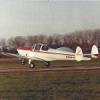

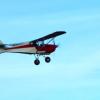
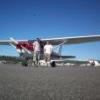



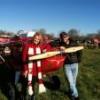




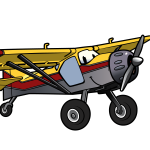
Mark IV For Sale
in Avid Flyer General Hangar
EDMO
Posted · Edited by Ed In Missouri
Jim,
He also said he had his 68 inch prop at 7 degrees - thinking he has it too flat - donno what rpm he is pulling, but sounds like he needs to grab more air to climb? Thats a lot less pitch and prop I was told to use, but maybe he has less hp than mine?
Note that Leni said that Randy's Soob would outclimb his 582.
Ed